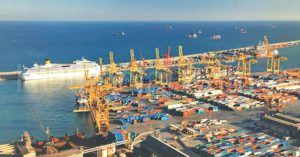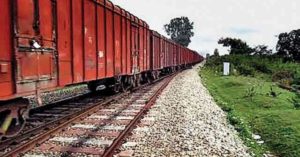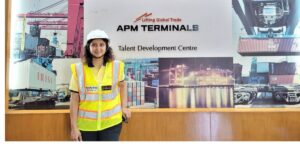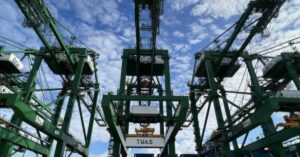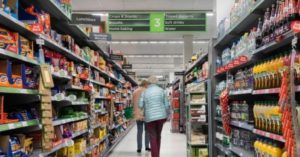With an initial focus on Tier 1 cities, ESR, a globally renowned industrial parks developer launched its India platform in 2017 to capitalise on the growing demand for larger industrial facilities in modern logistics parks. Having presence across 9 cities ESR India is developing infrastructure at par with international standards across the country.
Can you give a brief idea about what is ESR India and what is its focus in India?
ESR started in India in the year 2017 and in a span of 4 years, we are today present in 9 cities with a portfolio of about close to 18 million square feet and we have 15 sites across these 9 cities. We have more than 700 acres of land which we have acquired and you know, part of joint ventures which we have done over the course of the last 4 years. Our idea when we entered India was to bring in our expertise for the APAC market and create Grade A industrial parks which we have done outside of India as well. So, we have certain infrastructure standards which we do it globally. So, we are just bringing those international standards of our parks to India right now.
What exactly is the logistics real estate platform? Is it physical infrastructure that you are talking about?
Oh yes. So, basically the primary business is we buy land and we develop large industrial and logistics parks. We build them and we lease it out to various customers. During this course, we create infrastructure for these large parks.
So, essentially, you build it, you own the space and lease it out?
Yes, absolutely.
Currently you have couple of projects in progress and I think recently you have announced one project in Tamil Nadu as well. Can you elaborate on these projects?
Very recently we signed an MOU with the government of Tamil Nadu where we already have a project in Chennai in Oragadam which is an 80-acre park with the development potential of 1.9 million square feet of which we have already built our first building and have leased it to one of our clients. Apart from this there are more parks in Tamil Nadu for which we have signed up with the government very recently; one would come up in the Kancheepuram district which would be about 44 to 45-acre park and the second project would be in the Krishnagiri district which would be about 80 to 100-acre park. We have identified the lands in both these locations and very soon we should be concluding land transactions in these locations. Total investments for these two new projects should be to the tune of about 550 crores in the state of Tamil Nadu. Coming to your second question when you spoke about GIC which is one of our capital investors with whom we tied up, so we have come up with a joint venture with GIC which is the Singapore Government Sovereign Fund, we have come up with a joint venture platform where we have invested $750 million meant to create A-grade industrial logistics spaces for India so that’s the platform with GIC which is completely separate where we have the investments coming in and that’s how we are proceeding with infrastructure development in the country.
I know logistics is currently a very hot vertical in India but can you tell me the journey during the last 2 years with the global pandemic and its impact on manufacturing activity? What do you foresee in the next few years?
I would divide the 2 years into one year each. So, the first year of the pandemic was, obviously all of us were very surprised, we were taken by a shock because suddenly you are locked down in your houses, what do you do? So, the first year, honestly, we didn’t see much of manufacturing demand coming in because everything was standstill and started going online and when the entire demand moved online, e-commerce guys were the only guys who were showing resilience in this entire pandemic, in the first lockdown or rather I would say that 2020 time. That’s how the demand for e-commerce was always up. So, 2020 was a year where we saw a lot of demand coming in for the e-commerce side. Now, in the second lockdown, I think people were kind of more prepared or rather the manufacturing companies were more prepared.
In the second lockdown, or in 2021, I would say the demand for manufacturing has come up, specifically a few sectors like pharmaceuticals have given the vaccine push, so we had a good demand coming up from pharma. Renewable energy is picking up in India. FMCG and engineering are also doing good; we have seen good amount of demand coming in right now from the manufacturing companies as well, with a good balance from the e-commerce and the 3PL guys. This is what we have seen. Now, in the pandemic, obviously we have had impact, we being the developers, we have seen a good amount of impact coming onto us in terms of steel and cement prices going up. So, the steel prices have gone up from about 36% to 40% broadly year-on-year in cities like Mumbai, Chennai, Kolkata, etc. So, that has obviously been a big impact to us with the costs really going up, and the other part is in the pandemic, you would have seen a lot of people going back to their original hometowns, lot of labourers migrated back, they migrated to various cities, they went back to their home towns. So, the availability of labour was a big challenge. That was another challenge which I think we are still dealing with. There are quite a lot of people who are still in their houses; they do not want to really go back. So, that is a challenge which is still there.
Given these two challenges and the thin margins with which we operate on, the good thing is that there is good amount of demand coming in from both manufacturing and e-commerce and 3PL guys. The next two years, I mean, that was your second question, so the next two years, I anticipate a good demand coming in from the manufacturing guys. I think India is really growing as a country and with the government’s push for various incentive schemes which the government is giving to manufacturing companies today, a lot of the companies are looking to invest in India and manufacture in India. So, from that angle, I think good amount of manufacturing is going to happen which includes pharma, renewable energy, automobiles, engineering, all of these sectors I think are going to have good amount of demand coming in, and I think e-commerce and 3PL will continue to grow like they have done in the last 2 years.
When you talk about demand, have you any analysis of the geographical segmentation, like which part of India or maybe which states are showing promising locations for you to move on?
Geographically, from manufacturing point of view, Tamil Nadu, Maharashtra and Gujarat, these are the 3 markets which kind of dominate the manufacturing requirements. So, for example, Chennai is known as the Detroit of India with a lot of automobile and recently renewable energy, electronics coming into Tamil Nadu. You would see Ola’s factory coming up in Krishnagiri, Tata’s factory for the iPhone manufacturing coming up in the same Krishnagiri district. So, lot of electric, electric mobility coming up, that’s one in Tamil Nadu. Then Maharashtra again, with Pune being one of the largest automobile hubs, housing big automobile brands so again that continues to remain a big industrial location, and third is Gujarat which is also coming up in a big way in the manufacturing space, and interestingly, all these 3 geographical locations have good connectivity to the port as well. So, that’s another significant thing which many manufacturing companies look at in terms of import, export. So, these 3 locations is where we would look out from a manufacturing point of view. Now, from the e-comm point of view, we are seeing good amount of demand coming in across the country. So, we have seen demand coming in for Bangalore, Hyderabad, up north towards Gurgaon and then Kolkata. So, all the regions from the e-comm point of view because they need to cover the entire country. So, from an e-comm 3PL point of view, it’s those cities, and from manufacturing, it’s Tamil Nadu, Maharashtra and Gujarat.
When you design these industrial parks, how do you plan them? Are they industry-specific or vertical-specific? Because each vertical might have their own specifications and requirements, and today, warehousing is not just the kind of sheds that were being built in the previous era. Now all the warehouses are state-of-the-art infrastructure. So, can you give me an insight into these?
Previously, we did not call them warehouses as such, we used to call them godowns. So, we kind of moved on from that era of a godown and really moved into a modern warehouse today. Now, when we develop a part, as I said, we have certain international standards in the APAC region. We are bringing in those international standards into the country. Again, it is location-specific and as you mention, it could be product-specific as well. So, for a market like Chennai, I might do a building having a clear height of 10 meters because here I would anticipate a demand coming in from manufacturing or assembly guys. However, in a market like Bangalore or Hyderabad, I would do a building with a clear height of 12 meters because that is going to be dominated by the e-comm or the 3PL guys and they would need more height to stack up vertically. So, depends on the location, depends on the sector I am targeting as well. That’s on the building, otherwise our standard specs would remain more or less the same but the height of the building is something which could vary. Our road sizes is something which we plan right when we buy the land; how would the road sizes be, the docking entrance sizes? So, all of that is something we pre-plan before we buy a land and that’s how we plan the entire industrial space.
In terms of timeline, what is the project lifecycle? The movement from the drawing board to making the facility operational, how does it happen?
In India, acquiring land is a very challenging task but let’s say from the day you acquire the land, for you to deliver the first building, would take you about, I would say about 12 months, given we need to take approvals and all of that. So, I would say about 12 months to deliver because in the first building, it is not only the building which you are going to do, you are also going to create the infrastructure for the entire park, right from your STP lines, your fire lines, your storm water drains, all of those have to run for the entire park. So, you need to do the infrastructure for the entire park and then do the building and that would take about 12 months from the day you get approvals.
What is the minimum and maximum size of your park, in terms of square feet or acres?
In terms of acres, we would look at a minimum of at least 25 acres of land, going even as high as 200 acres probably, but it is again subject to the location, road and other elements. So, we would look at those parameters as well. Minimum in terms of square foot would be half-a-million sq.ft I believe.
How is the business model like – you are the complete asset owner or are there any partnership modes wherein you partner with any financial institution or a manufacturing company or a big logistics company? How does it work? Or pure landlord model?
There are various models. One is, as I told you, we partnered with GIC which is one of our capital investors with whom we have a joint venture platform of $750 million. Now, we generally prefer buying land, being the owners ourselves under that platform and develop it, but given the way India is, you may not be always be able to buy and we have various partners. So, few deals which we have done is – one with the Lodha Group in Bombay which is about a 100-acre joint venture with the Lodha Group, and we have done one more joint venture with the GMR Group in Hyderabad, which is a 66-acre project. So, we do various models right from buying the lands outright and developing it ourselves and also doing joint ventures as well. However, we haven’t done any joint ventures with a manufacturing company. However, we are not averse to it, we could evaluate it depending on the location.
How do you manage all these assets? I believe you have a Park Management application?
Oh yes. We have an in-house facility management team and to add to it, we are the first people I would say rather in this particular domain to develop an app. So, we have an ESR app which is…any customer we sign up with, is given the access to that app. So, a customer sitting anywhere in the world will be able to use the CCTV cameras which we have across the parks and they will be able to see the construction which is happening at their site, there are contactless entry and exit, given the pandemic so we have integrated that into the app as well. So, you could just plug in the details of who is going to come, that person is going to get a kind of a code, they just come in, scan the code and they can directly get inside the park. Now, these parks are large, so we thought of…if it’s a 100-acre park, let’s say Ram Prasad comes in and he doesn’t know which building he wants to go, so he could just go into the app, he is not even a customer but he could still have the app and something we have integrated called as a way find, so it will help you tell which building you have to go to.
The moment you enter the client name, it will tell you which building you have to go, how are you supposed to go. So, it also helps the truck drivers who have these smartphones nowadays, they can also use it and they would know exactly which building to go to, etc. So, there are quite a few features in the app which we have integrated, so there are amenities which a customer can book through the app. If there is a complaint for example, there is something which a customer wants to get repaired by informing the facility management team, the customer could just take a photograph, put in on the app, and within 24 hours, our facility management team will ensure that the complaint is looked at. I think we are the first people to do that and that is something which we are doing from the facility management point of view.
Can you name any marquee customers of yours?
Well, I would say in Chennai, very recently, we have signed CUBIC. CUBIC is a Danish Company which makes electrical modules for renewable energy space. So, very recently we built a state-of-the-art building. In my background, I am sure you are able to see a nice building, that’s the CUBIC’s building and that’s the first building we built in Chennai. So, that’s leased to them. So, CUBIC is one of our very recent customers.
ESR India is confined to India or this office has any plans for South Asia because I think the neighboring countries as well have huge potential for logistic parks?
We do have plans for the South Asian market. Very recently we have entered the Sri Lankan market. Very soon, we will be entering the various other South Asian markets as well. So, very soon, you will be hearing about a lot of acquisitions in the other parts of South Asia.




